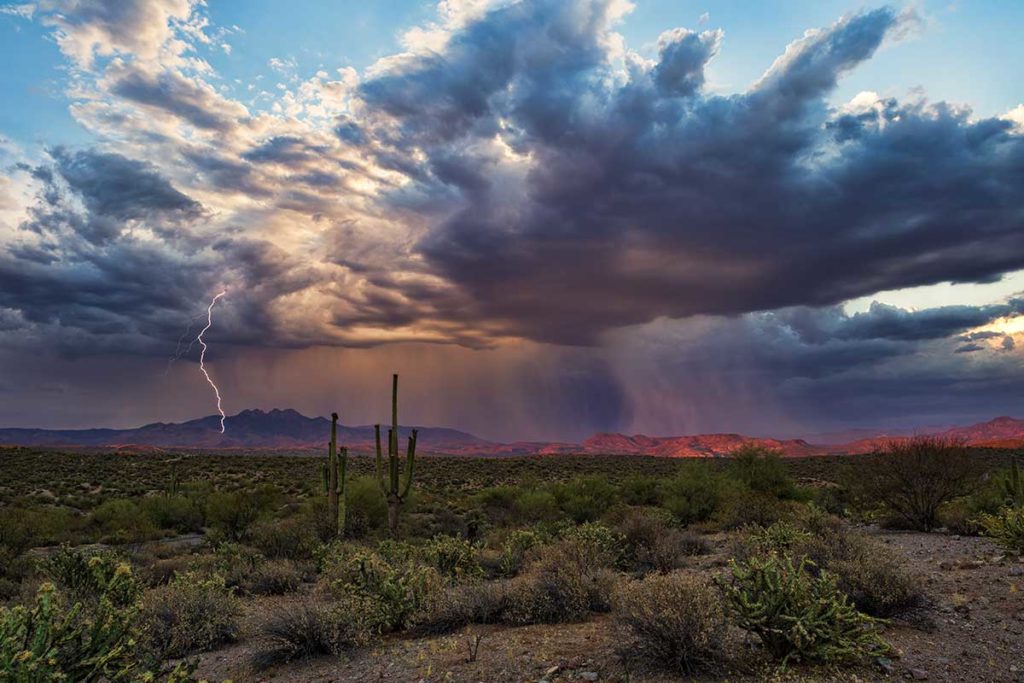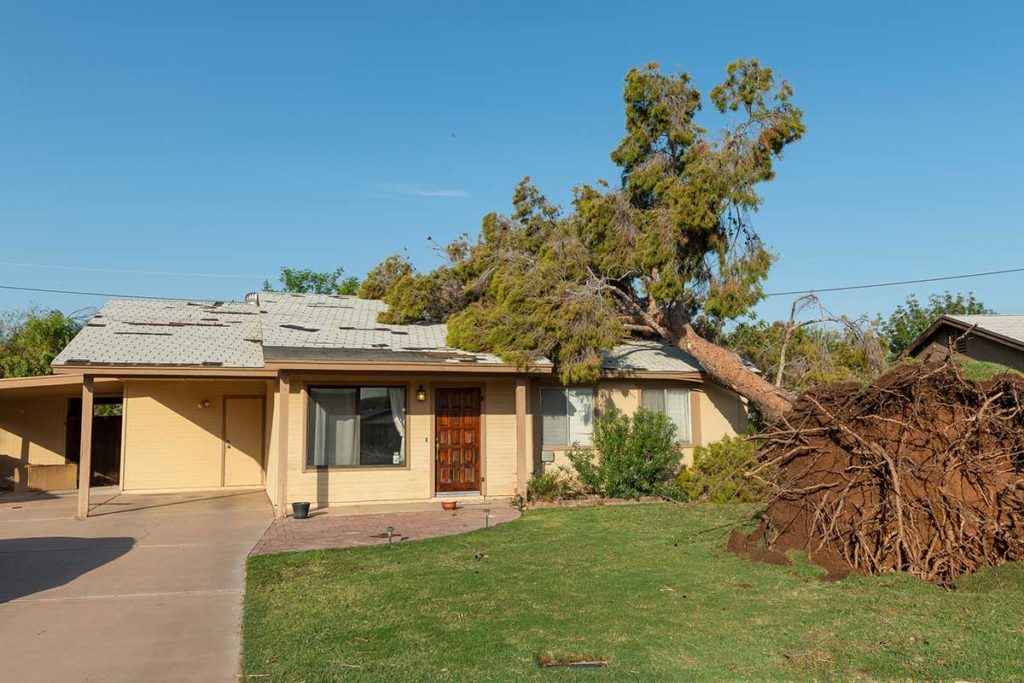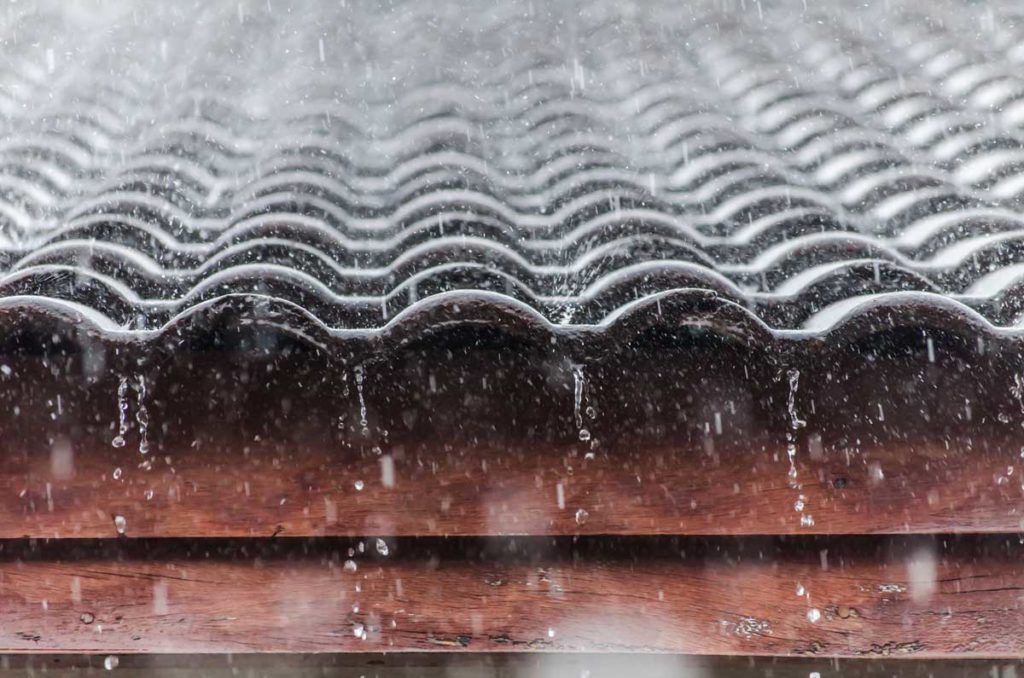How to Protect Your Home Against the Monsoon Storms

During the current monsoon season, Arizona experiences heavy rain, lightning, heavy winds, and those big dust storms known as haboobs. Some years are worse than others. In any case, here is what you may need to watch out for in order to protect your home against the vicious monsoon storms.

1. Falling branches, tipping trees, mini-floods
If your home is surrounding by trees it’s important to make sure they’re properly trimmed in order to reduce the risk of storm damage. If a large tree or branch falls on your home, it could be a costly repair. Prune your trees and branches so trees are properly groomed.
Make sure your trees are watered well in the summer. Dead trees and branches fall over easier than when they’re healthy.
If you have thing long trees or bushes, you may want to use cabling or a support system to hold them steady. Call a certified arborist to help with these services. After all, beautiful trees provide shade and valuable assets to your landscape.
If you are thinking about planting trees in your yard, try to avoid some of the ones that shed heavy debris in storms. Some of which include giant palm trees and eucalyptus.

Does your yard have no slope to filter water? If water is standing when it rains heavily, it’s time to put gutters on your roof to carry water away from the house or patio.
Another solution for a flat yard is to switch from a solid concrete driveway to one paved with permeable concrete pavers. A landscaper can put a “river” paved with rocks to move water out of the yard. However, if you don’t move your water problem downstream it can cause damage to your foundation and become a breeding ground for mosquitos.
2. Lightning, electrical storms, power surges

Did you know that Arizona has the second most lightning strikes out of any state right behind Florida? Yes, it’s true! If lightning strikes a power pole, it can send a surge of power to a whole neighborhood. If there is an outage at your house, wiring in your appliances and electronic devices can be damaged as soon as the power starts back up.
Avoid any electrical issues by using a small suppressor hard-wire directly to your electrical service panel. These prices can range from about $400 to $1,000. You can also buy a few high quality, surge protectors to use in your home. Areas of the house where you have a lot of electronics would be ideal for surge-protection such as home theatres, appliances, office and living room.
Some houses and barns use lightning rods to protect their homes.
Are lightning rods a good idea? For ultimate protection, they can be mounted on the highest points of your roof. When lightning strikes a house, it hits a rod that sends the jolt through wiring into rods buried in your yard. But all this can be more expensive than surge suppressors and beyond the reach of many homeowners. They should be installed on barns and stables to protect horses and other animals.
3. Roof damage and leaks

If you notice any water leaks after a storm, it’s important to address the situation right away. You could have broken shingles or cracked clay tiles that are allowing water inside your home. If you have a flat roof, water can sit on the roof and eventually cause a leak.
In older homes, the entire roof may need to be replaced before the next storm. Those afraid of heights shouldn’t attempt to go on their roof unless they feel comfortable doing so. Use a stable ladder in order to remove storm debris, like branches and leaves.
If you notice a big leak that won’t stop, be sure to poke a hole in the sheetrock overhead and put a pail underneath. This way you can avoid the ceiling from falling down which can turn into a huge mess. Call a roofer immediately, one you can trust.
4. Dust and dirt
Sometimes it’s not always possible to know when dust storms are going to sweep through your neighborhood. However, you may notice warning signs such as the sky turning yellow or hearing warnings on the radio. If you have enough time to react, move patio furniture into the garage and cover the swimming pool and outside grill.

After the storm passes, keep the pool filter running to pick up any dirt that was left behind and make sure the filter is still working.
Your garden hose might not be strong enough to wash away the dust. Try borrowing or renting a pressure washer to clean the landscape and exterior walls.
During monsoon season, you may need to replace the intake filters for your HVAC system more than usual. Check your filter and if it looks dark, it’s time to change it out. We recommend replacing your filter every 30-45 days during the summer months.
Tags: against, dust, haboob, home, lightning, monsoon, protect, rainfall, storm, thunder
Leave a Reply